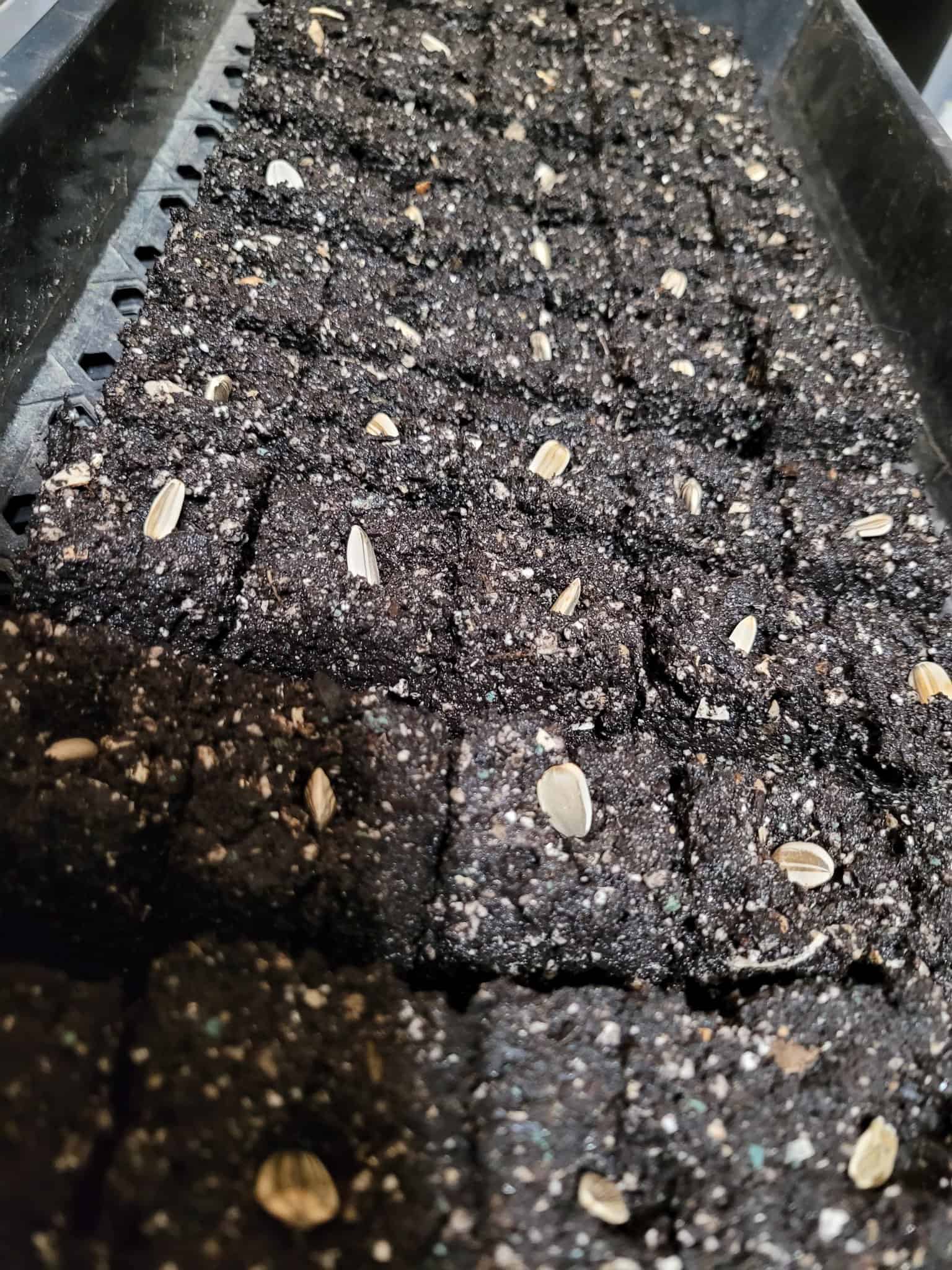Although growing seedless Watermelon from seeds is a bit sensitive, it has similar growing needs to its counterpart melons with a slight difference in germination.
Continue reading to learn and overcome the complex hurdles of growing seedless Watermelons.
Table of Contents Show
Overview of Seedless Watermelon Seeds
A Japanese scientist and a professor at Kyoto University, Hitoshi Kihara, devised a method to produce the seedless Watermelon in 1939.
He crossbred normal Watermelons and tetraploid Watermelons to make a seedless hybrid of Watermelons.

Here is a quick overview of the seed of seedless Watermelon to get you acquainted.
| Seed Attributes | Properties |
|---|---|
| Shape | Elliptical seeds |
| Color | Dark brown, black |
| Size | Around 1-1.5 cm in length with thicker coat than that of normal Watermelons. |
| Weight | 5-15 seeds per gram |
| Germination Initiator | Water |
| Germination Time | 7 to 14 days |
| Germination Temperature | At 85°F through out the germination process and after 40% growth maintain temperature at 70-80°F |
| Treatment Prior To Germination | 1. Scarring the seed coat 2. Soaking in warm water for almost 24 hours. 3. Dry them properly before sowing them. |
| Soil Type and pH For Seed Germination | Well-draining, sterile soil with pH between 6.0 and 6.8. |
| Seed Sowing Depth | 4 inches deep |
| Toxicity | Non-toxic for pets and humans |
Where do Seedless Watermelon Seeds Come from?
Seedless Watermelon results from the complex crossbreeding between diploid Watermelons and tetraploid Watermelons.
Generally, regular Watermelons have 11 pairs (2X) of chromosomes, while the seedless has 11 triploids (3X) chromosomes giving it the triploid Watermelon.
Meanwhile, there are no seeds in triploid Watermelons because they are infertile. So they can not make seeds.
If you are having difficulty understanding this, just take the example of mules, the hybrid produced by the cross between horse and donkey and is sterile.
Similarly, seedless Watermelons do not occur naturally and need intense, costly steps to develop, making them expensive to grow, as 100 seeds can cost you around 150$.

Furthermore, you can expect the worst while germinating these expensive seeds because they have a very low germination rate.
How to Get Seedless Watermelon Seeds?
Watermelon plants are monoecious, meaning they have separate male and female flowers in the same plant.
Therefore, you will have to plant tetraploid and diploid Watermelons together to get seedless Watermelon seeds.
In general, the female flowers of Watermelon has tiny melon on their back, while male flowers do not.
Meanwhile, male flowers of tetraploid won’t make fruits with female diploid flowers.
So to efficiently produce the triploid Watermelons, you must hand pollinate the flowers.
Here are a few steps to properly hand pollinate.
- Find a cotton swab or paintbrush and carefully select the flowers that have matured and are ready for pollination.
- Collect pollens by rubbing the paintbrush or cotton swab on the flower’s anthers.
- Place the pollens on the female flowers properly.
- Repeat these steps as many times as you feel like doing.
Within a month, you will be able to notice ripening Watermelon fruit with seedless Watermelon seeds in it.
Take reference from the video to get visual help!
Seedless Watermelon Seeds for Sale
Many scammers all over the internet claim to provide seedless Watermelon seeds. Therefore, you have to be careful when buying seeds of seedless Watermelon.
Here I have included some certified stores with seedless Watermelon seeds for sale.
| Sellers | Shipping |
|---|---|
| Seedway | Within 2 weeks |
| Harris Seeds | Within 1-2 business days of receipt |
| Urban Farmer | Within 1-2 business days |
| Gurney's Seed & Nursery Co. | At least 3-5 days |
How to Grow Seedless Watermelon Seeds?
As mentioned earlier, the germination of seedless Watermelon seeds is not an easy task.
However, you can enjoy juicy Watermelon that won’t have any seeds upon successful germination.

Meanwhile, you have two different methods to plant seedless Watermelon seeds. They are direct sowing and transplanting.
However, the transplanting method is much better and suitable for Watermelon.
Step 1: Prepare the Seed
The viability of the seeds is greatly influenced by their harvesting time. So, check the seeds’ quality and age before buying them.
After getting fresh new seeds, follow the seed prep steps.
- Presoak the seeds in a cup filled with lukewarm water for almost a day.
- Ensure the seeds are dry before sowing them.
- Try scrapping the rounded end of the seed to encourage faster germination, allowing better water uptake.
Step 2: Prepare the Starter Mix
You can use a light seed starter sterile mix with good aeration and better water drainage.

And better to buy readymade sterile potting soil from certified retailers than make it yourself.
Because seedless Watermelon seeds are sensitive to soil saturation and demand quality.
Step 3: Sow the Seeds
Before filling the germination tray with potting mix, sterilize them properly.
- Fill in the germination tray with potting mix, leaving behind 1/4th part of the tray empty.
- You can add pebbles or gravel at the bottom of the tray to encourage better drainage.
- If the surrounding and soil temperature is less than 75°F, place a heating mat below the tray to make a minimum soil temperature of 75°F.
- Make a 2-4 inch deep hole by poking your finger or chopstick.
- Place the seedless Watermelon seeds in it and gently cover it up with a potting mix.
- For direct sowing, maintain 12 inches distance between each seed when planting.
- Afterward, you can prepare a mini greenhouse using a clear plastic to maintain ideal humidity and soil.
- Maintain the conducive temperature for the seed at 75°F to 85°F.
- Carefully water the soil to keep it moist and humid with the help of a mister.
Voila! Within two or four weeks, you will be able to see brand-new seedlings shooting from the seeds of seedless Watermelons.
Step 4: Transplant the Seedlings
After the successful germination of the seeds embraced with excellent care and affection, it is time to transplant them.
But ensure the garden soil temperature is above 70°F and avoid transplanting before summer.
Due to the high sensitivity of triploid seeds to cold injury, you can use plastic mulch to keep the soil temperature intact.

Meanwhile, you must plant other typical Watermelon plants next to each other.
The pollens produced by seedless Watermelon are sterile. Therefore, they need other Watermelon’s fertile pollen for fruiting.
For efficient cross-pollination, grow seedless Watermelons and regular Watermelons alternately.
You shall plant at least one pollinator Watermelon for two triploid Watermelon plants.
When planting pollinator Watermelon, you shall choose a distinct one to recognize seedless with seeded Watermelon at the time of harvest.
Have patience and wait about 100 days to harvest and devour the juicy seedless Watermelon.
Tips to Care for Seedless Watermelon After Planting
The seedlings of seedless Watermelons are sensitive to various care factors, so it is mandatory to provide them care even after transplanting.
Here are some basic care requirements for your new seedless Watermelon seedings.
| Care | Specification |
|---|---|
| Sunlight | 1. Provide at least 6-8 hours of full sunlight or partial shade. 2. Avoid low-light areas as it discourages no blooms or fruits. |
| Temperature | 1. Provide 70°F or above temperature during spring and summer. 2. The saplings prefer a consistent 65°F during the day and 60°F at night. |
| Humidity | 1. Maintain a moderately higher humidity level of 50 to 60%. 2. Regular misting will help achieve moderate humidity. |
| Watering | 1. Provide water to your plant on a daily basis till it starts fruiting. 2. Let the top few inches of the soil dry out between watering after the fruit appears. 3. Provide 1/2 inch of water per week to keep the soil moist but not soggy. |
| Fertilization | 1. Use fertilizer with NPK 5-10-10 to feed the plant for proper growth. 2. Avoid fertilizing immediately after blossoming to avoid problems. |
Final Thought
Seedless Watermelon results from a complicated crossbred process between two different Watermelons, which has even more difficult growing requirements.
However, regardless of the slim chances of successful germination, they are still rewarding when provided the best care and efforts.
Happy Gardening!


